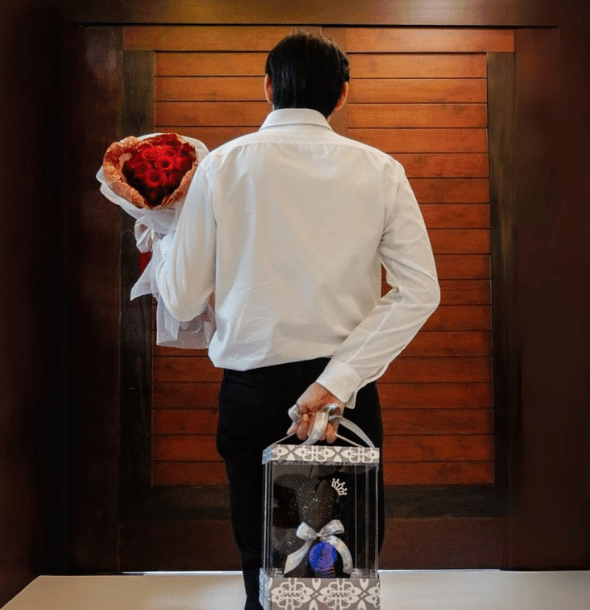Opening Doors & Pulling Out Chairs: Are These Traditions Still Relevant?
Traditions surrounding etiquette have long been a part of societal norms and customs. In a rapidly changing world, it is worth questioning the relevance of certain traditional practices. In this article, we explore the age-old traditions of opening doors and pulling out chairs, and whether they hold significance in contemporary society. We will delve into the historical context of these practices and examine how cultural dynamics have shifted over time. We will present arguments for maintaining these traditions, such as the display of chivalry and preservation of cultural heritage, as well as arguments against them, including concerns about gender roles and the potential for patronizing behavior. By critically examining these traditions, we can gain a better understanding of their place in modern etiquette and whether they continue to be relevant in our evolving society.

Key Takeaways:
- Opening doors tradition: The act of opening doors for others can be seen as a display of chivalry and politeness, maintaining a sense of respect and courtesy.
- Pulling out chairs tradition: This practice can be viewed as a way to show respect for autonomy, allowing individuals to have control over their own seating arrangements.
- Changing cultural dynamics: Shifts in gender roles and a growing importance placed on respecting autonomy have challenged the relevance of these traditions in modern society.
What are the Traditional Etiquette Practices?
Curious about traditional etiquette practices that involve opening doors and pulling out chairs? Delve into the fascinating realm of social customs and discover the significance behind these age-old traditions. From the gesture of opening doors to the act of pulling out chairs, each sub-section of this exploration will uncover the historical contexts, cultural variations, and possible modern adaptations of these etiquette practices. Let’s embark on a journey to unravel the complexities and relevance of these time-honored gestures.
Opening Doors
Opening doors is a significant etiquette practice in various cultures. It involves one person physically opening a door for another person. This act demonstrates respect and politeness, acknowledging someone’s presence and valuing their comfort and convenience. It shows a willingness to assist others.
In today’s society, the act of opening doors remains relevant and appreciated. It promotes positive social interactions, fostering a sense of community and compassion. It is especially important in public places and professional settings, where individuals may have their hands full or need assistance due to mobility issues.
The act of opening doors is not limited by gender. Both men and women can open doors for each other as a kind and respectful gesture.
Despite arguments that modern advancements have made this tradition unnecessary, the act of opening doors maintains its significance as a gesture of goodwill. It transcends cultural boundaries and reminds us to treat others with courtesy and consideration. By opening doors, we can cultivate a more inclusive and compassionate society.
Pulling Out Chairs

Photo Credits @workingfrom_thehoxton
When performing the traditional act of pulling out chairs, it is important to follow a set of steps in order to do so gracefully and considerately.
First, approach the table where the chairs are located, being mindful of any obstacles in your path.
Next, assess the situation and determine who would benefit from having a chair pulled out for them, such as the elderly or people carrying heavy loads.
Stand behind the chair that you plan to pull out, making sure not to obstruct the person who will be sitting in it.
Gently grasp the backrest of the chair with both hands, using a firm yet gentle grip to avoid any accidents or sudden movements.
Slowly and smoothly pull the chair away from the table, being careful to maintain control and avoid any jerking motions that may startle the person who will be sitting down.
As the chair moves away from the table, guide the person towards the seat and offer any necessary support or assistance to ensure a smooth transition into the chair.
Once the person is comfortably seated, push the chair back towards the table, making sure that it fits snugly without causing any discomfort.
It is important to remember that pulling out chairs is a gesture of respect and courtesy, and by following these steps, you can perform it in a graceful and considerate manner.
Historical Context of Traditional Etiquette Practices
Step back in time and explore the fascinating historical context of traditional etiquette practices. Uncover the origins of the opening doors tradition, a gesture rooted in respect and chivalry. Discover the intriguing origins of the pulling out chairs tradition, a symbol of courtesy and consideration. Get ready to journey through the annals of history and unravel the stories behind these long-standing and sometimes debated traditions.
Origins of Opening Doors Tradition
The Origins of the Opening Doors Tradition can be traced back to medieval times when knights displayed chivalry and respect by opening doors for ladies. This practice was deeply influenced by the concept of courtly love, where men behaved courteously and gallantly towards women. The act of opening doors not only symbolized the knight’s strength but also their protectiveness towards women.
Religious customs also played a significant role in the Origins of this tradition. Christianity, which promotes selflessness and serving others, saw opening doors as a humble act of service and a way to show respect.
Through the passage of time, the practice of opening doors became deeply ingrained in society and has been passed down from generation to generation. It transformed into a symbol of good manners and a reflection of a person’s upbringing and social status. Today, the Opening Doors Tradition has evolved to include people of all genders and has become a universal gesture of respect and courtesy.
The cultural and historical significance of the Opening Doors Tradition is evident in its origins. Despite changes in societal norms, this tradition continues to hold value as a way to show respect and consideration for others.
Origins of Pulling Out Chairs Tradition
The tradition of pulling out chairs has its origins in medieval times, when knights would assist noblewomen in sitting at the dining table. This gesture was a display of respect and chivalry towards women, who found it difficult to sit gracefully due to their gowns and skirts. The furniture during that period was not very sturdy, so helping someone sit also prevented potential accidents and embarrassment. The act of pulling out a chair also symbolized the man’s role as a protector and provider.
As societal norms evolved, pulling out chairs became a way to display good manners and politeness. It became an important part of social etiquette, serving as a means to honor and show respect to women.
In recent times, there has been a shift in gender roles and a stronger focus on gender equality. Some argue that this tradition perpetuates gender stereotypes and suggests that women are incapable of taking care of themselves. On the other hand, there are those who believe that this gesture is a sign of respect that should be upheld in order to preserve tradition and cultural heritage.
The origins of the pulling out chairs tradition lie in a bygone era, reflecting different norms and expectations. Whether it remains relevant in today’s society is a subjective matter that depends on individual perspectives and the evolving dynamics of our culture.
Changing Cultural Dynamics

Photo Credits @mollyemillerphotography
In today’s rapidly evolving world, we find ourselves questioning longstanding traditions and their relevance. One such area is the changing cultural dynamics, where societal norms and expectations are undergoing a significant transformation. Join me as we explore the sub-sections that delve into the shift in gender roles and the importance attributed to respecting individual autonomy. Brace yourself for fascinating insights backed by relevant data, as we navigate through this captivating exploration of cultural shifts.
Shift in Gender Roles
The shift in gender roles significantly impacts traditional etiquette practices. In the past, these practices were based on gender expectations, with men being expected to be providers and protectors, and women being expected to be nurturing and submissive. In many modern societies, these expectations are outdated.
There is now a focus on equality between men and women, recognizing that both genders can perform the same tasks and display acts of politeness and chivalry. Opening doors and pulling out chairs may be seen as unnecessary or patronizing in certain contexts. Some argue that traditional etiquette practices can display chivalry and politeness, but it is important to adapt these practices to reflect the changing dynamics of society.
The key is to treat everyone with respect and dignity, regardless of their gender. The shift in gender roles calls for a reevaluation of traditional etiquette practices, promoting equality and inclusivity while respecting individual autonomy.
Respect for Autonomy
Respect for autonomy is pivotal when discussing the customs of traditional etiquette. It is essential to acknowledge an individual’s independence and their right to make their own choices. In the current cultural context, where equality and personal freedom are given priority, respect for autonomy plays a significant role.
By valuing someone’s autonomy, we acknowledge their capability to make decisions for themselves without imposing our own perspectives or expectations. This includes respecting their choices in social situations, such as offering assistance with Opening Doors & Pulling Out Chairs: Are These Traditions Still Relevant?.
Respecting autonomy entails recognizing that not everyone appreciates or desires these customary gestures. What some people perceive as chivalrous or polite, others may view as unnecessary or even condescending. It is important to consider and respect individual preferences and boundaries.
Respecting autonomy encourages equal treatment and challenges traditional gender roles. It empowers individuals to define themselves and their actions without conforming to societal expectations. It fosters inclusivity and equality.
Arguments for Maintaining Traditional Etiquette Practices
In a world that relentlessly evolves, the value of traditional etiquette practices can sometimes be questioned. When it comes to maintaining these customs, there are compelling arguments to consider. Join me as we explore the display of chivalry and politeness, and how they contribute to a more gracious society. We’ll also delve into the preservation of tradition and cultural heritage, uncovering how these customs connect us to our roots. Brace yourself for a thought-provoking journey through the importance of upholding traditional etiquette practices in today’s ever-changing landscape.
Display of Chivalry and Politeness

Photo Credits @boxedblossoms
Display of chivalry and politeness in traditional etiquette practices is significant in modern society. Opening doors and pulling out chairs for others demonstrates respect and consideration. It showcases genuine chivalry, highlighting values of kindness and politeness.
By opening doors, individuals show thoughtfulness and courtesy. This action indicates recognition of others’ presence and a willingness to assist. It fosters a positive atmosphere of respect and consideration in social interactions.
Similarly, pulling out chairs conveys attentiveness and care. It shows a willingness to ensure the comfort and well-being of those around them. This politeness can make others feel valued and appreciated in social settings.
While some argue these traditions perpetuate gender roles, it’s important to recognize that the intention is rooted in respect and kindness, rather than reinforcing stereotypes. It is up to individuals to interpret and practice these traditions in a way that aligns with modern understanding of equality and respect for all.
Preservation of Tradition and Cultural Heritage
Preservation of Tradition and Cultural Heritage is essential for maintaining traditional etiquette practices. These practices connect us to our past and help us understand our cultural roots. By continuing these traditions, we honor the customs and values that have shaped our society.
Traditional etiquette practices reflect the values and ideals of a specific culture. They provide insight into traditions, beliefs, and customs. Preserving these practices ensures that our cultural heritage remains intact.
These traditions foster unity and belonging within a community, providing a common ground for people to celebrate their shared identity. Upholding these practices strengthens our cultural bonds.
Traditional etiquette practices also teach important values like respect, courtesy, and consideration for others. They promote positive social interactions and create a harmonious society.
Preserving tradition and cultural heritage is crucial for maintaining diversity and preserving unique identities of different communities. It allows us to celebrate the richness and variety of cultures worldwide.
Arguments Against Traditional Etiquette Practices

Photo Credits @nikkiormerod
Are our traditional etiquette practices still relevant in today’s world? In this section, we’ll delve into the arguments against these time-honored customs. From the imbalance of gender roles to the potential for patronizing behavior, we’ll explore the concerns raised by critics. Let’s question the status quo and examine whether these traditions truly have a place in our modern society.
Imbalance of Gender Roles
In the realm of traditional etiquette, there exists an imbalance of gender roles. Over the course of history, these customs have perpetuated traditional gender norms.
1. Women were traditionally expected to embody passivity, accepting chivalrous acts such as door-opening and chair-pulling. This dynamic created a paradigm in which women’s value was based on their femininity and reliance on men for assistance.
2. Conversely, men were anticipated to assume the roles of providers and protectors, showcasing their masculinity through these acts of politeness. This served to reinforce the notion that men are powerful and dominant, while women are fragile and reliant on aid.
This asymmetry in gender roles yields negative outcomes. It fortifies stereotypes and curtails individuals’ freedom and agency. It suggests that women are incapable of independently opening doors or pulling out chairs, thus perpetuating a sense of dependence. It places the onus of responsibility solely on men, disregarding women’s capacity to fend for themselves.
It is crucial to challenge these conventional norms and strive for a more egalitarian and inclusive society. By acknowledging and addressing the imbalance of gender roles within traditional etiquette, we can advance gender equality and empower individuals to make their own choices without being constrained by societal expectations.
Potential for Patronizing Behavior
Potential for patronizing behavior can arise in various ways. One example is when traditional etiquette practices, such as opening doors and pulling out chairs, are perceived as patronizing.
These actions can assume that the person receiving assistance is incapable of performing these tasks themselves. This presents a problem for gender dynamics as it reinforces traditional gender roles, where men are expected to be chivalrous and women are expected to be passive.
Treating someone as incapable of simple tasks like opening a door or pulling out a chair can be condescending and dismissive of their abilities. It implies that they are unable to take care of themselves or make their own decisions. This disregard for individual abilities can be disrespectful.
When one person assumes the position of helper and another person is in the position of receiving assistance, there is the potential for an imbalance of power. This is especially true in professional settings or situations where individuals should be treated as equals. Unequal power dynamics can emerge from these interactions.
Adhering to traditional etiquette practices can fuel stereotypes based on gender, age, or social status. By following these customs, individuals may unknowingly perpetuate harmful stereotypes. This can contribute to a culture that limits opportunities for people based on these characteristics.
While some may perceive these actions as polite gestures, it is essential to consider the negative implications they could have. Respecting individual autonomy and promoting equal treatment should be prioritized.
Frequently Asked Questions
Are opening doors and pulling out chairs still relevant in Western cultures?
Yes, opening doors and pulling out chairs are traditions that are still considered relevant in many Western cultures. These acts of chivalry are seen as gestures of respect, politeness, and consideration towards women.
What are the negative effects of benevolent sexism?
Benevolent sexism can have several negative effects on women. Research has found that women who experience benevolent sexism may perform worse on cognitive tasks and feel incompetent. It can also lead to women experiencing cardiovascular responses similar to threat and feeling less competent in intimate relationships.
Do women prefer men who exhibit benevolent sexism?
Yes, studies have shown that women tend to prefer men who exhibit benevolent sexism, especially those who feel insecure in their relationships. This preference may stem from perceiving these men as warmer and more willing to invest.
Does benevolent sexism reinforce traditional gender roles?
Yes, benevolent sexism reinforces traditional gender roles by viewing women as less competent and reinforcing male dominance and female subordination. It can also reward submissiveness and hinder women’s attainment of leadership roles.
What does the New Chivalry Movement aim to bring back?
The New Chivalry Movement aims to bring back acts of chivalry that have become less prominent in modern society. These acts include giving up your seat to someone in need, pulling out a woman’s chair, opening doors for her, and walking on the street side of the sidewalk to protect her. It also suggests men should call instead of text when asking a woman out on a date and give her compliments regularly.
Why do some argue against chivalry?
Some argue against chivalry because they believe it enforces double standards and that women should be treated as equals. They argue that acts of kindness and respect should be performed for all people, regardless of gender, and that chivalry keeps the gender barrier strong. There are also discussions about what women should do in return for these acts and the need for equality.
